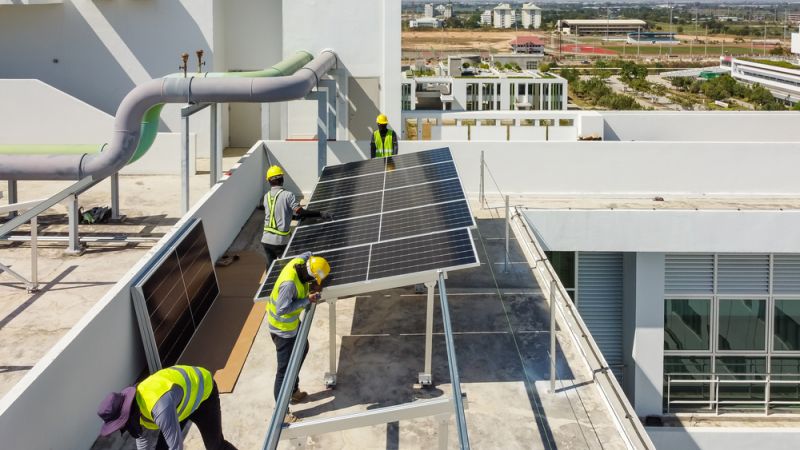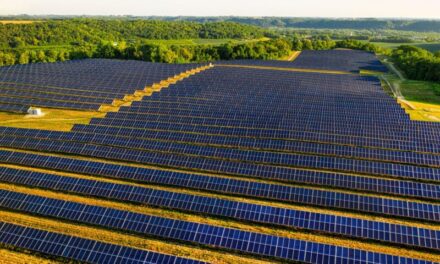In recent years, rising energy costs have become a significant concern for manufacturers in the United Kingdom. According to a recent survey by Make UK, six in ten manufacturers believe that the severity of these rising energy costs poses a threat to their businesses. In such challenging times, it becomes crucial for manufacturers to find innovative ways to reduce energy consumption and lower their operational costs. Here, Jeremy Whittingham, industry consultant and member of the Advanced Engineering team highlights practical strategies and initiatives that can help manufacturers save energy and navigate through these difficult times.
Conduct an energy audit
The first step towards reducing energy consumption is to conduct a comprehensive energy audit, looking at energy usage patterns, equipment efficiency and overall building efficiency. In the industrial sector, often the most energy consuming position is the process energy use, such as using high power appliances like electrical welders, machine tools, steel melting furnaces or wood drying chambers. By assessing the current energy usage and identifying areas of inefficiency, manufacturers can gain valuable insights and develop targeted energy-saving strategies. Engaging a professional energy auditor can provide expertise and recommendations tailored to the specific needs of the manufacturing facility.
Invest in energy efficient equipment
Replacing outdated machinery and equipment with energy-efficient alternatives can have a significant impact on reducing energy costs. According to the 2022 Energy Efficiency Survey Report by ABB, replacing the world’s 300 million industrial motor-driven systems with optimised, high-efficiency equipment could lead to a ten per cent reduction in global electricity consumption. This reduction is equivalent to more than 90 per cent of the entire European Union’s annual consumption.. Manufacturers wanting to invest in energy-efficient equipment should look for equipment that has best-in-class efficiency ratings, like IE3 (premium efficiency) or IE4 (super premium efficiency) for motors, or advanced technology, such as variable speed drives combined with electric motors.
Implement smart manufacturing
Embrace the concept of smart manufacturing, where advanced automation and data analytics are utilised to optimise energy consumption. Implementing sensors, controls, and monitoring systems can help identify energy waste and enable real-time adjustments to optimise energy usage. For example, Colgate-Palmolive is using smart flow pneumatic sensors and IIoT-enabled software architecture to monitor compressed air flow in real-time to identify leaks, optimise pneumatic processes and improve air flow efficiency in its product packaging facilities – by using these technologies, the company has already seen a 15 per cent reduction in energy usage on its packaging lines. By collecting and analysing data, manufacturers can gain valuable insights into their energy usage patterns and make informed decisions.
Optimise production processes
Streamlining production processes not only reduces energy consumption but also improves productivity. Identifying bottlenecks by closely analysing the production workflow helps companies take proactive measures to resolve them, using methods such as reorganising workstations, redistributing tasks or implementing automation technologies. Eliminating unnecessary steps is another crucial aspect of streamlining production processes and reducing energy consumption — many manufacturing workflows tend to have obsolete steps that consume energy without contributing to product quality or functionality. Implementing lean manufacturing principles is another effective strategy to reduce waste and minimise energy-intensive processes. Lean manufacturing focuses on identifying and eliminating non-value-added activities or practices within the production system. This approach emphasises continuous improvement, waste reduction, and the efficient use of resources.
Embrace renewable energy
Consider integrating renewable energy sources into the manufacturing facility. Installing solar panels, wind turbines, or utilising geothermal energy can generate clean and sustainable power, thereby reducing reliance on grid electricity as well as increasing energy security and independence. By generating power on site, manufacturing facilities become less reliant on external energy suppliers and are less vulnerable to fluctuations in energy prices or supply disruptions. Although the initial investment may seem substantial, the long-term savings and positive environmental impact make it a worthwhile endeavour. Over time, the cost of generating renewable energy can be significantly lower than purchasing electricity from the grid, especially when we consider potential incentives from government sources, tax credits, and reduced operational costs. By investing in renewable energy infrastructure, manufacturers can stabilise their energy costs and potentially generate additional revenue by selling excess energy back to the grid.
Foster a culture of continuous improvement
Make energy efficiency an integral part of the company culture. Encouraging regular communication and feedback among employees regarding energy-saving ideas and initiatives, as well as implementing a way of sharing best practice knowledge for the processes and machines within the facility means that energy saving can be a company-wide initiative which all employees are invested in. Defining and implementing key performance indicators (KPIs) related to energy consumption, such as overall energy consumption per unit of production, or percentage of renewable energy utilised, manufacturers can monitor their progress and identify areas for improvement. By fostering a culture that values energy-saving efforts, manufacturers can create a sense of ownership and encourage continuous improvement.
The rising energy costs in all industries can indeed be threatening to businesses, but it also presents an opportunity for manufacturers to embrace energy-saving practices and drive positive change. Implementing some of these energy-saving measures will not only lead to substantial cost savings but also demonstrate a commitment to sustainability and environmental responsibility. Remember, saving energy is not only beneficial for individual businesses but also contributes to the greater goal of a sustainable future for the entire manufacturing sector and the UK economy as a whole. Let’s embrace energy efficiency to overcome challenges and build a resilient and thriving manufacturing industry.
This year, at Advanced Engineering, visitors will be able to experience our sustainability trail, showcasing exhibitors that have a product or service that helps reduce our impact on the environment. To experience this, and much more, register for a ticket on the Advanced Engineering website.





